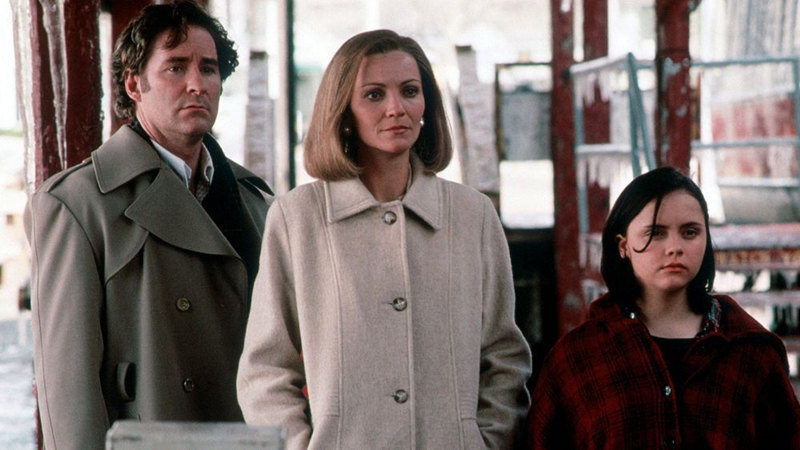In 1973, “Pink Floyd” released their record-breaking achievement, “Dark Side of the Moon.” It went on to sell approximately 34,000,000 copies worldwide, and the album is listed in the “Guinness Book of World Records” as being on the charts longer than any other album in history. There are even Web sites currently dedicated to showing random facts surrounding the album, such as when to start playing the record while watching “The Wizard of Oz.” I’ve found you can play “Dark Side of the Moon” as background music to just about anything on the television. It’s all a matter of audio perspective, really.
In 1973, I was only nine years old. My oldest sister had run away from home and left all her cool rock albums, and one of them was, as most of us “Pink Floyd” fans call it, “Dark Side.” My parents hated that one the most because it was what they labeled a “Drug Album!” Well, I will say my parents were not too far off with their opinion. After all, “Pink Floyd” was named after some LSD that was going around at the time. However, I was too young at the time to appreciate the album, or the LSD, for what it was, but later loved it as a teenager. As it turns out, even my parents appreciated it once I persuaded them to let their “drug guard” down. With that being said, it is one of the most multigenerational records you’ll find, as it is admired by fans of all ages. It has a sense about it that is mesmerizing, incredibly dynamic, and that feels almost connected to the sub-conscience. You really don’t need to be on drugs to appreciate it; the music itself is the drug.
As you can imagine, all this success weighed heavy on some English chaps who just wanted to be recognized for the art of their music. After all, they founded the underground psychedelic movement and rather enjoyed their cultlike success of the 1960’s. Granted, most of their old music is not for everyone, as it can be a bit bizarre and simply strange. It was literally the audio perception of hearing a Picasso. I will say you could hear some “Dark Side” hints on all their early albums where David Gilmour replaced Syd Barrett. Nevertheless, with great achievement comes a huge responsibility, and the follow-up album is double the pressure compared to making the successful record. The documentary, “Pink Floyd – The Making of Wish You Were Here” is about the making of that album that followed in 1975.
“Wish You Were Here,” as Roger Waters says, is “a melancholy album,” and I would have to agree, while I would say for Pink Floyd’s case, their best work – call it their peak, if you will – was in the 1970’s. As a guitar player, my personal favorite of that time era was their album “Animals,” simply because David Gilmour shreds on that record. Nonetheless, as history shows, they would go on to have even bigger success with “The Wall.” As a fan, I genuinely loved all those albums and still purchase any newly remastered CD’s, but I will say “Wish You Were Here” is my least favorite of that lot. It does have my very favorite song of theirs, which is the title track, “Wish You Were Here,” but the rest of the album does seem downhearted and, perhaps, a bit too personal. While I admire the craftsmanship on the album coming from Roger Waters (bass, vocals), David Gilmour (guitars, vocals), Nick Mason (drums) and the late Richard Wright (keyboards, synthesizers, vocals), I find it’s a record you need to be in the mood to listen to.
The documentary covers just about every detail of making the album, and it uncovers what was behind every song and every band drama that went with all the newly added pressures of pleasing the record label. Many of these frustrations are clearly heard on the song “Have a Cigar,” which is actually sung by folk singer Roy Harper. We even get the perspective of the album’s graphic art from their artist, George Hardie. In the late 1960’s, George was known for creating risqué animations; one of them of a mouse smoking a joint, which was enough to send any conservative running to the hills in that era. Need I mention that the animated mouse looked similar to a mouse that comes from the Magic Kingdom? Well, you get the picture.
From the start of the documentary we learn the opening track, “Shine on You Crazy Diamond,” is where the tone is more solemn and personal, as the song is about their past founding band member, the late Syd Barrett. While I feel the overly-long track has a few blissful moments, I didn’t feel it needed to a reprise later on the record. Nevertheless, the documentary focuses more on each band member’s personal feelings about their old band mate, Syd. You might as well say the entire album was dedicated to Syd Barrett, as it always felt that way to me in the first place. However, I’m not sure about the mess known as “Welcome to the Machine,” which is really no more than Roger and Richard having fun with some synthesizers. In Roger’s defense, he does explain the song as some kind of metaphor meaning the big machine of life and how we’re all a part of it . . . man. Right, Roger; put the pipe down. The song is dreadful, and it always has been. I think the song would work well in a science-fiction movie, but on the stereo it’s not the most appealing song to appreciate.
Anyone who is a “Pink Floyd” fan will appreciate the details in this documentary, but I’m sure it’s just old news on a Blu-ray. It is nice to see the interviews with the remaining band members, and I would have to say, David Gilmour still has a far better singing voice than Roger Waters. Plus, it’s never been any secret the band members have had their, shall we say, emotional outbursts? The result of those outbursts was Roger Waters permanently leaving the band in 1985. Overall, I wouldn’t view this documentary thinking you’re going to get “Pink Floyd’s” entire history. No, this is simply a chapter in their career. However, it does feed from their past in order to tell the story, but only up to September of 1975.
Video:
This disc is presented in 1080i high definition widescreen, 16×9 (1.78.1). As with any of these documentaries, the interview material is current and looks great, but the restored old band footage looks as though it was washed through a high-definition meat grinder. Let’s face it, trying to restore old video to Blu-ray still looks like old, grainy video. I think the idea is we’re supposed to have the feeling of looking through someone’s old photo album, and then getting to talk to that person in hi-def. If that’s the case, it works . . . sort of.
Audio:
The audio is delivered by DTS-HD Master Audio stereo. The sound quality is quite clear, with a good dynamic tone when music is playing. However, don’t expect to hear any of the songs in their entirety, as there are only sound bites of the songs. The point is, when any music is playing, the sound is fuller as it fills the room, rather than the standard center speakers you get with interview footage. Overall, the audio is crisp and clear and works great for what it is.
Extras:
I’m voting the musical featurette on this disc the worst extra in the history of extras. I guess if you’re a huge Roger Waters fan you’ll be in heaven, but I found it so depressing that I was considering jumping off a thirty-story building at the end of it. The extra – and it’s the only extra – is Roger Waters with an acoustic guitar singing “Wish You Were Here.” What’s sad is he performs and sings it so poorly, and there were a couple times I thought he was going to fall asleep. I’ve seen some outstanding acoustic performances, but this was not one of them. I guess if you’re into the novelty of it as a fan I can understand it, and I don’t have anything personal against Roger Waters, but if I had to rate it on its own merits it’s a yawning disaster.
Parting Thoughts:
“Pink Floyd” certainly made their mark in music history and have given us astonishing craftsmanship as musicians. They are easily one of my favorites from the Classic Rock Era and have stood the test of time, even though their early work with Syd Barrett is a footnote compared to the success they had with David Gilmour. Granted, “Wish You Were Here” did not go out and share the enormous success of “Dark Side,” but it was successful enough to keep the momentum going. To be honest, I think any fan will find “Pink Floyd – The Making of Wish You Were Here” a nice addition to their “Pink Floyd” video collection. It’s an interesting study of the pressures it takes to get a project off the ground and the difficulties the journey endures battling the record industry, which includes pleasing your fan base, too. Think of swimming in a tank full of sharks and you’ll get the idea.


